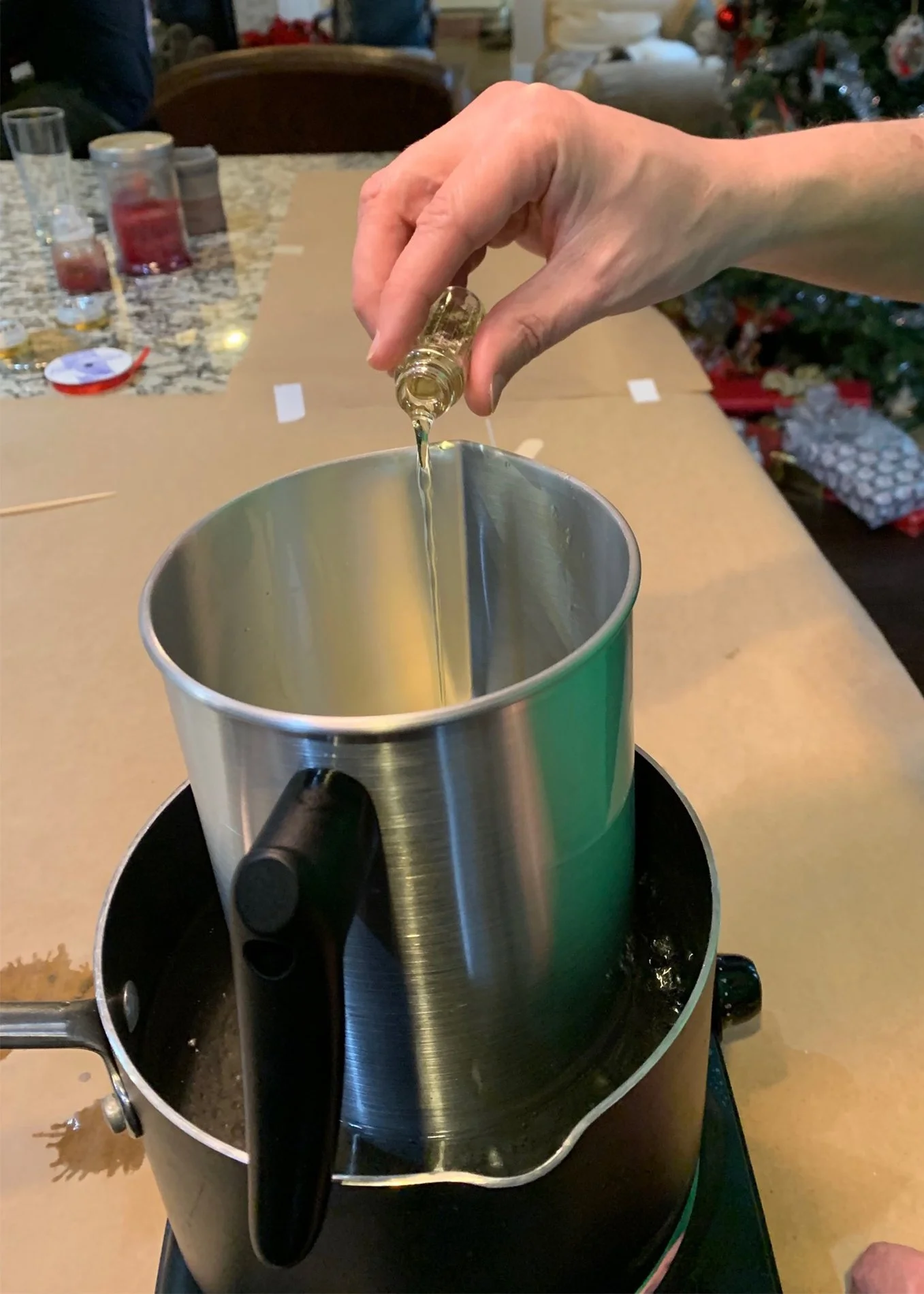Making Container Candles
Pouring the Wax
This is the first blog post for 2022 and I wish you all a Happy New Year! Over break I enjoyed some needed down time which finally gave me the opportunity to work on my candle making skills. Last Christmas Andy gave me this fantastic book on candle making which is called “The Candlemaker’s Companion: A Complete Guide to Rolling, Pouring, Dipping, and Decorating Your Own Candles” by Betty Oppenheimer. I finished the book and tried my hand at making Container Candles! This project has been on my ‘To Do’ list since Andy gave me the book and I’ve been saving interesting candle containers all year for just such an occasion.
What was even more special was that Andy made the candles with me! I must say, it is cool when your husband shares your interest in making candles. Once I cleaned and dried the containers, we began the candle making process. The first step was to cover the work surface with some butcher block paper. This protects the surface from unwanted wax should a spill occur.
For this round of candles, we used Para Soy wax and made the total of three candles, one large and two votive size candles. The first step is to melt the wax to 175 – 185 degrees. We did this using the double-boiler system. This includes having a hot plate on which we heat the pans, one larger outer pot to boil the water and then a smaller inner pot to melt the wax. The smaller vessel sits on a trivet in the larger one. The inner pot with the wax has a handle and a spout so that it makes pouring the wax easier and helps reduce unwanted wax spillage.
While the wax is melting, we prepped the containers by centering the premade cotton wicks in the container using a circular sticky tab that is slightly larger than the metal tab that attaches to the end of the wick. We used popsicle sticks to help hold the wicks upright. According to The Candlemaker’s Companion, one should warm up the containers prior to pouring the wax to help avoid wax shrinkage. We did this by setting the prepped containers is a bit of water and warmed it on the stove, taking care not to get water in the container.
Once the wax is completely melted, we added the fragrance of White Gardenia which is one of my all-time favorite fragrances. It reminds me of a perfume I bought while in Hawaii when I was a teenager, I’ve loved the scent ever since! We added 1.4 ounces of fragrance (this is scent that is specifically made for candles verses essential oils) to our 22 ounces of wax and let it cool to 160 – 170 degrees. The temperature of the wax is important so make sure you have a good thermometer and check the wax often.
Once the wax reaches the proper temperature, it’s time to make the candles. I first poured a small amount of wax to cover the bottom of the container to help set the wick. Then I filled the remainder of the container with the wax. I then put the unused wax back on the burner to keep warm while the candle set. After the candle wax started to harden a bit, we made a holes near the wicks and filled that holes with the remaining wax. The reason you pierce the candles is to help release any air bubbles that might be in the wax. If you, do it right, when the candle dries completely you should have a candle that has an even surface at the top. If you don’t do it right, your candle will have a small indentation or well around the wick, or you may have a crack in which case the wax temperature was off when you made the last pour. Unfortunately, in two of our candles we had wells and one had a crack! The good news is that even with these small imperfections the candles still burn, and they smell wonderful! And… we will continue to perfect our candle making skills so that one day our pours will be spot on and our candles perfectly even, but until then we will enjoy (or I will) the fruits of our candle making labors!
If you are interested in making your own container candles, you can pick up all your supplies on Amazon or visit your local craft store (in Colorado you can find candle making supplies at Hobby Lobby and Michaels). Betty Oppernheimer’s book The Candlemaker’s Companion can also be found on Amazon.





